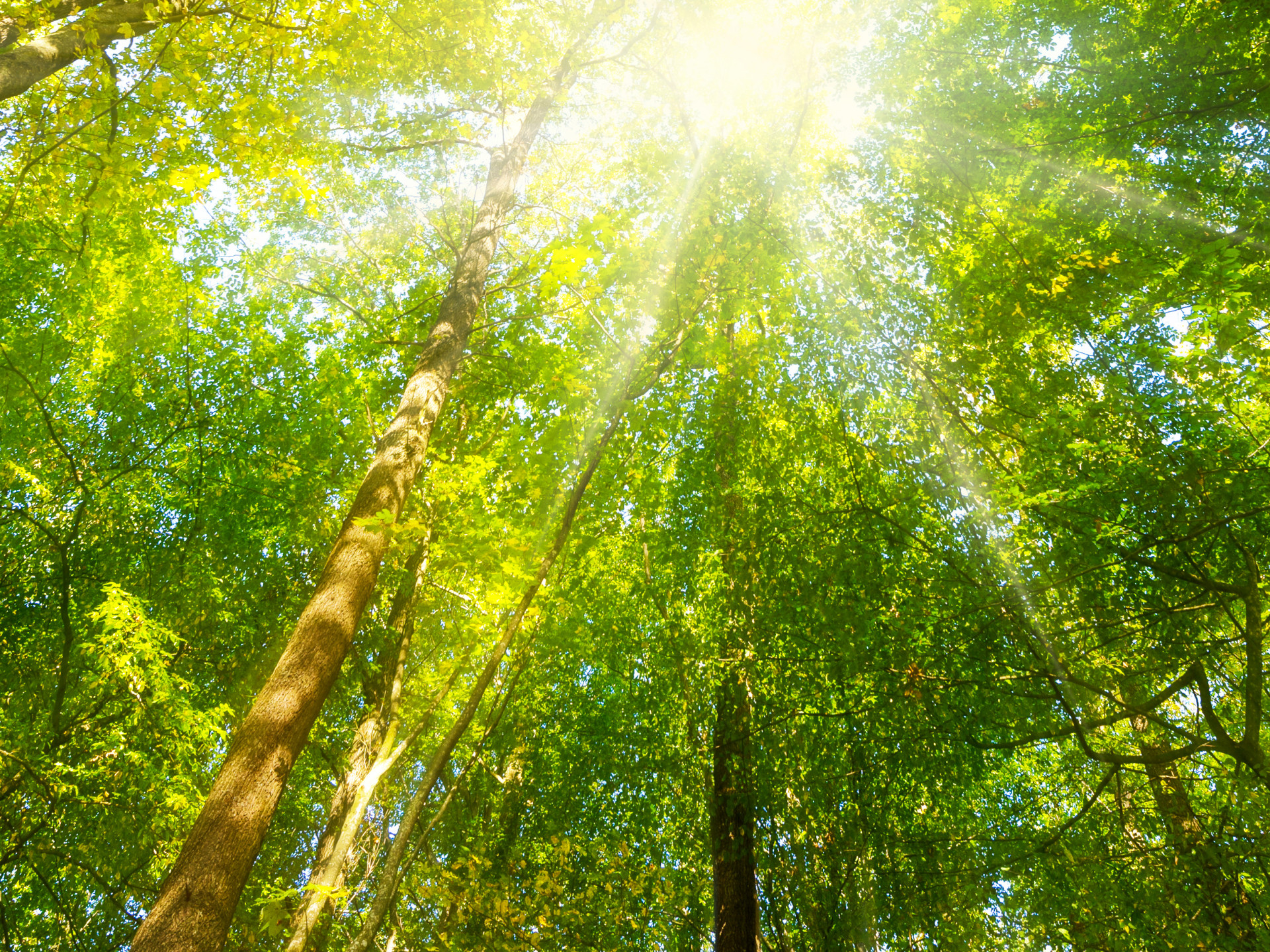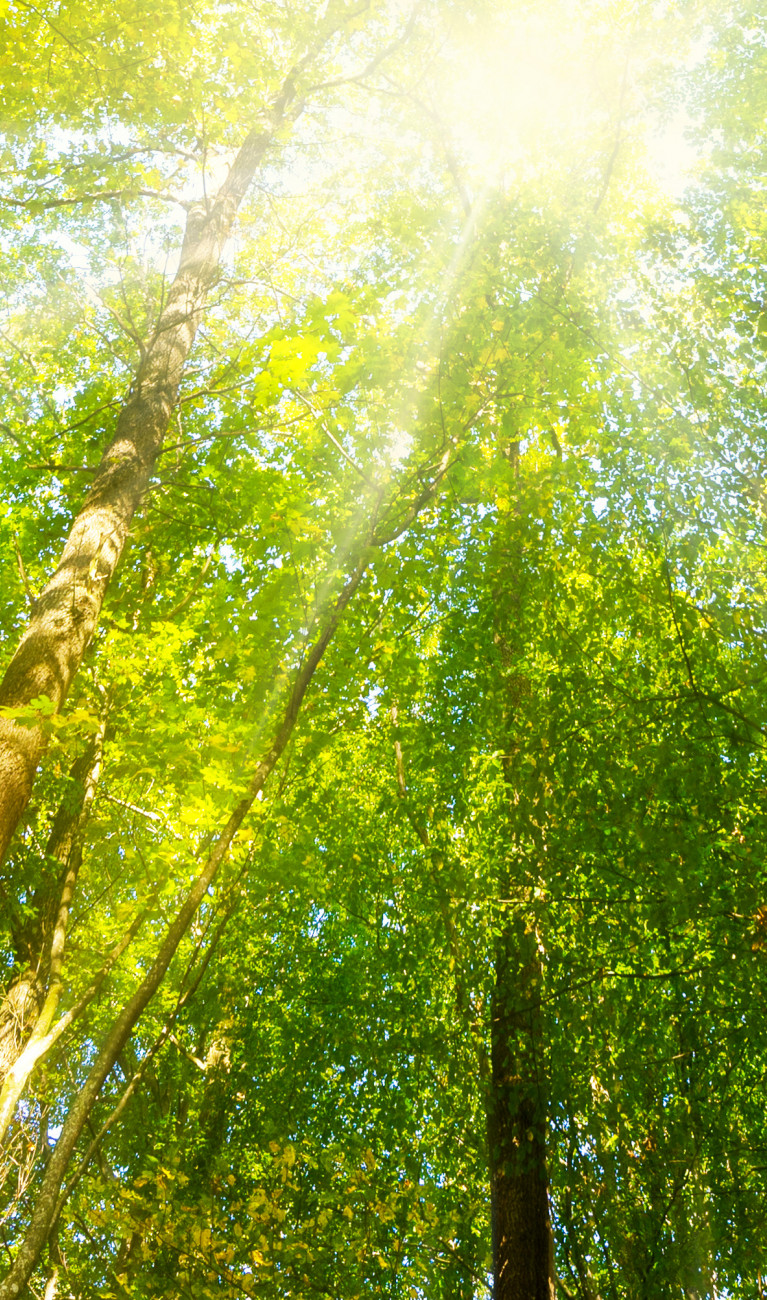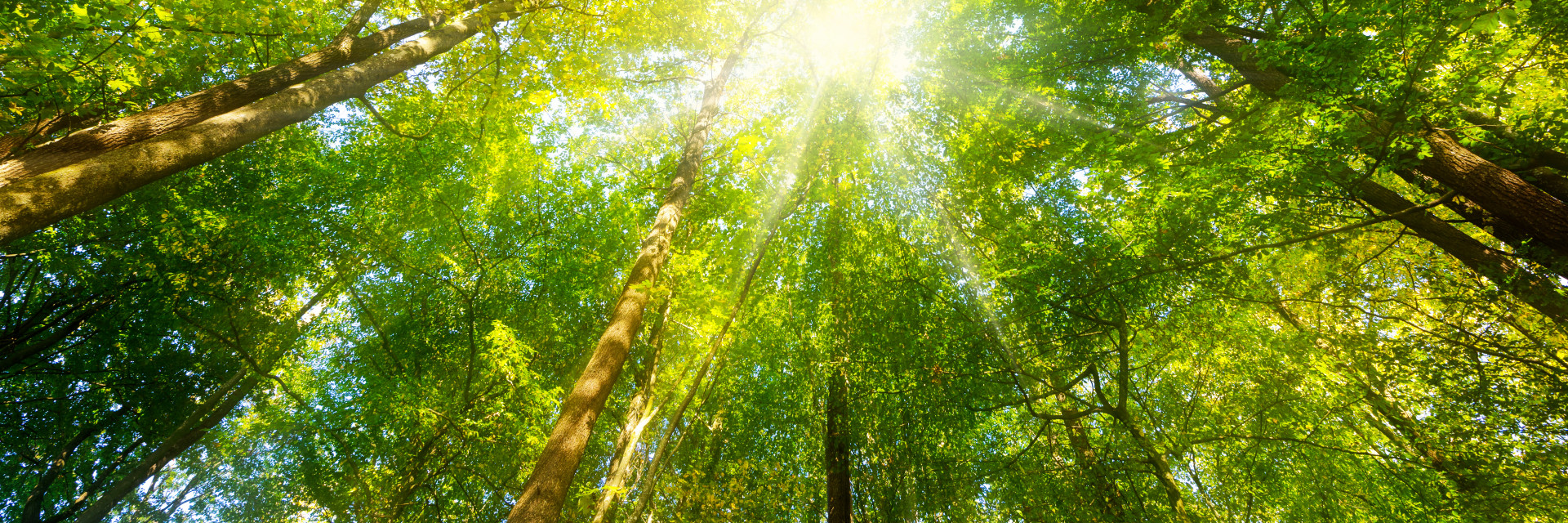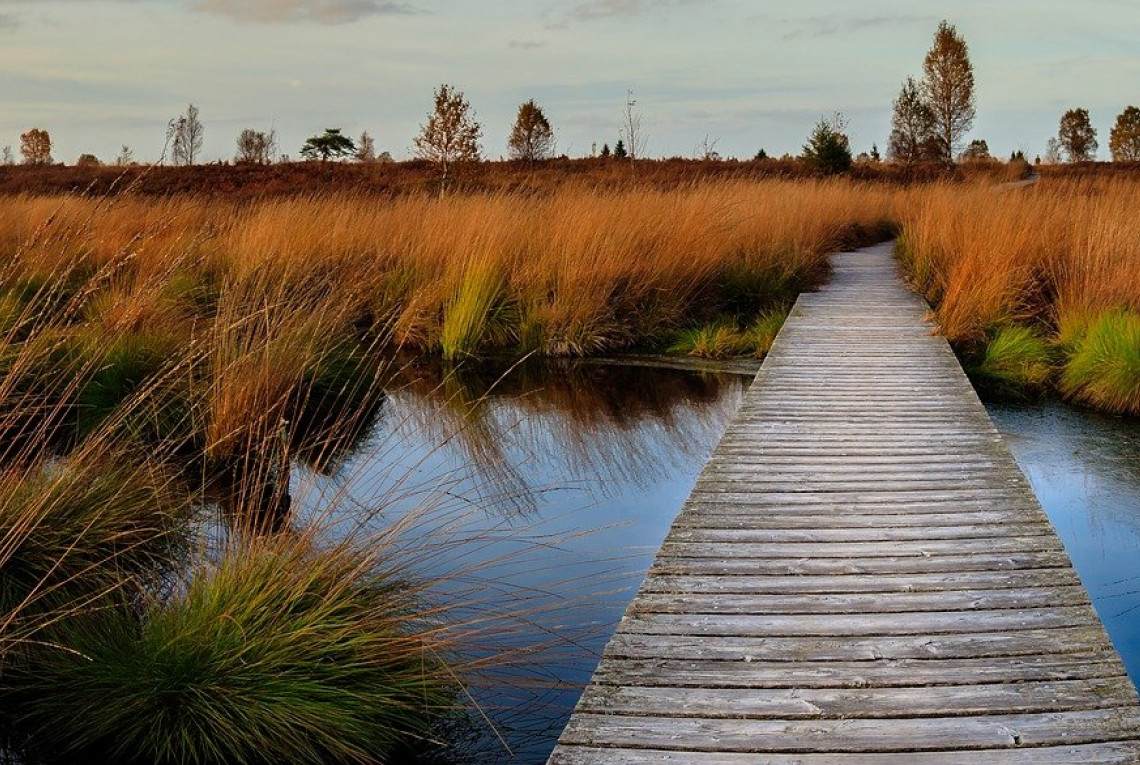How CO₂ can be removed from the air


To achieve the goals of the Paris Agreement and limit global warming to 1.5 to 2 degrees Celsius, it will not be enough to emit less carbon (CO2). In addition, CO2 must also be removed from the atmosphere. This is possible through both natural and engineered processes. Based on a new study by the Helmholtz Climate Initiative, we here present the different methods of CO2 removal and their potentials for Germany.
Bioenergie mit CO2-Abscheidung und -Speicherung (BECCS)
Bei der Bioenergie mit CO2-Abscheidung und -Speicherung (engl. Bioenergy with Carbon Capture & Storage, kurz BECCS) geht es darum, CO2 bei Bioenergie-Anwendungen abzufangen, bevor es in die Atmosphäre gelangt. Das CO2 soll dann entweder durch CO2‑Abscheidung und -Lagerung (engl. Carbon Capture and Storage, kurz CCS) gespeichert werden oder mittels CO2‑Abscheidung, ‑Nutzung und ‑Speicherung (engl. Carbon Capture Use and Storage, kurz CCUS) wiederverwendet werden.
In their concept, the researchers assume that the use of 500 megawatts electric combined heat and power (CHP) plant fueled by wood pellets and equipped with a device that captures the CO2 emitted during combustion could remove 2.99 megatons CO2 per year. If 10 out of 18 currently operating coal-fired CHP plants would be converted to biomass and retrofitted with Carbon Capture and Storage units, approximately 30 megatons of CO2 could be removed annually. On the deployment scale, this option is on a pilot level. Deployment would be possible in a few years.
Gasification is a well-developed technology for the conversion of fossil fuels and waste. Biomass as feedstock has been investigated intensively and large pilot and demonstration plants have been erected and operated worldwide. In their concept, the researchers assume that a gasification plant of 100 megawatts thermal capacity equipped with a device that captures the CO2 emitted during gasification could remove 60 kilotons CO2 per year. If scaled up, it could provide removal of 3.72 megatons CO2 by 2050. On the deployment scale, this option is on a pilot level. Deployment would be possible in a few years.
Pyrolysis, the decomposition of organic compounds at high temperatures and with the large-scale exclusion of oxygen, is well established for fossil fuels, but also for biomass feedstocks. Following the researchers, a 50 megawatts thermal plant could provide removal of 100 kilotons CO2 per year. Assuming the use of 10 megatons of wood per year, 12.2 megatons CO2 could be removed annually if this technology would be implemented. On the deployment scale, this option is on a pilot level. Deployment would be possible in a few years.
Germany has around 9 000 operating biogas plants. Assuming that until 2050, approximately 4,000 biogas plants with minimal capacity of 500 kilowatt electric would be retrofitted with carbon capture units, around 12.6 megatons CO2 could be removed. On the deployment scale, this option is on a pilot level. Deployment would be possible in a few years.
Paludiculture is the use of wet ecosystems such as wetlands and peatlands for multiple purposes, including biomass and bioenergy production. In Germany paludiculture is estimated to be applicable on an area of at least 215,000 hectares. Such an area could provide feedstock for approximately 156 biogas CHP plants with 500 kilowatt electric capacity each, which would provide a removal of 0.49 megatons CO2 per year. On the deployment scale, this option is on a demonstration level. Deployment would be possible in a few years.
A BECC feedstock which could bypass the problem of competition for land is macroalgae, seaweed, biomass cultivated in the marine environment. The macroalgae breeding and cultivation technologies have been well developed and matured with successful deployment, especially in Asian countries. In Germany, a new structure for mariculture of brown macroalgae has been developed and tested off the North Sea coast. There are approximately 250 biogas power plants in the North Sea coast area in Germany (coastal districts in the states of Lower Saxony and Schleswig-Holstein). If those plants would be retrofitted with CCS units, it could provide removal of approximately 0.79 megatons CO2 per year. On the deployment scale, this option is on a pilot level. Deployment would be possible in a few years.
Direct Air Carbon Capture and Storage (DACCS)
In Direct Air Carbon Capture and Storage (DACCS), CO2 is removed from the ambient air and stored underground.
Processes called Direct Air Carbon Capture, or short DACC, are technological solutions to filter CO2 from the atmosphere. The systems use specific chemical interactions of the CO2 with special materials to bind it and therefore remove the greenhouse gas from the air. There are so-called High Temperature-systems, that are usually only feasible at large scales, and Low-Temperature-systems, that could potentially be deployed in a decentralized application, e.g., into ventilation systems of buildings, reducing the required area. The application of DACC units dependents on external constraints like energy supply or available construction land. Therefore, giving a potential is rather difficult. In principle, it would be possible to filter up to 100 megatons of CO2 per year in Germany. If only large buildings would be equipped, the number would shrink to 15 megatons CO2 a year. On the deployment scale, decentralized DACC is on a demonstration level. Deployment would be possible in a decade or longer. With centralized DACC farms, DACC plants with several absorber and a large combined capture capacity in the Mt range, approx. 1 megaton CO2 per year could be removed. Centralized DACC is on a pilot level. Deployment would be possible within a decade.
Natural Sink Enhancement (NSE)
Natural sinks - also called natural carbon sinks - are natural 'containers' that temporarily absorb and store more CO2 than they release.
Peatlands are areas with naturally accumulated thick layers of dead organic material. Undrained peatlands, situated between upland and water as a subclass of wetlands, accumulate peat in soils owing to incomplete decomposition of plant material and animal remains under water-saturated conditions. In Germany, degraded peatlands, largely caused by drainage for agriculture and forestry, are responsible more than 5 percent (47 Mt CO2-eq per year) of GHG emissions. With appropriate planning to reconcile with the demands of agricultural land use and water use, rewetting these drained peatlands offers cost-effective option to avoid up to 43 megatons of CO2 emissions in the agricultural sector along with additional multiple benefits for biodiversity and ecosystem services. On the deployment scale, this option is on a commercial level. Deployment would be possible immediately.
In the last centuries, forests have been destroyed and used for agriculture. As a result, a lot of CO2 was emitted. The afforestation of cropland to secondary forests will sequester atmospheric carbon as biomass and soil organic carbon, consisting of the remains of dead plants. There is an estimated 3.3 megahectar of land in Germany appropriate for afforestation. If 10 percent of this area is reforested, 72 million tons of CO2 could be sequestered in Germany between 2020 and 2050. On the deployment scale, this option is on a commercial level. Deployment would be possible immediately.
By additionally cultivating arable land with cover crops, plants that are planted to cover the soil rather than for the purpose of being harvested, more carbon can be stored in the soil. In Germany, approximately 2.2 megahectar cropland are already grown with cover crops. Another 2 megahectar of cropland may be suited for cover crops in crop rotations. Assuming that an additional 2 megahectar of cropland are seeded with cover crops by 2050 with an annual 2 percent increase in cover crops, approximately 44 megatons CO2 can be removed from the atmosphere. On the deployment scale, this option is on a commercial level. Deployment would be possible immediately.
Increased weathering, both on land and on the seafloor, is one of the major natural responses of the Earth system to elevated atmospheric CO2 concentrations or temperature. Enhanced rock weathering as a CDR measure accelerates this process to capture CO2 by weathering carbonate and silicate minerals that are spread in powdered form on terrestrial surfaces like agricultural soils. In principle, a variety of natural or artificial sources of alkalinity can be used, but the focus here is on limestone or silicate rocks, like basalt. Basalt is mined mainly in the central part of Germany, with annual production rates per quarry of between 0.1 to 4.9 megatons rock with a maximum mining capacity of 32 megatons. Taking one of the larger quarries as a reference, 4 megatons of basalt spread over cropland in Germany would allow for 0.727 megatons CO2 to be removed from the atmosphere. If scaled up to maximum mining capacity (i.e., 32 megatons silicate rocks), approximately 5.82 megatons CO2 per year could be removed by enhanced rock weathering applied on 0.6 megahectar of cropland by 2050. On the deployment scale, this option is on a demonstration level. Deployment would be possible within a decade or longer.
Seagrass meadows and salt marshes are already making an important contribution to mitigating man-made climate change. In Germany, these ecosystems absorb an estimated amount of around 132 kilotons of CO2 annually. By improving the general conditions e.g., water quality through sewage treatment plants or adjustments to regulations of fertilizer use on agricultural land, and expanding these natural CO2 sinks, by 2050 a total of 200 kilotons CO2 could be removed from the atmosphere at the coasts of Germany every year. On the deployment scale, this option is on a commercial level. Deployment would be possible immediately.


